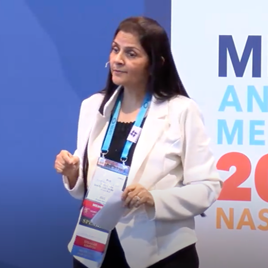Sep 20 2022
How to handle rejection from clients and prospects gracefully
Topics covered
As a financial advisor, facing rejections is part and parcel of the profession. You might have done all the preparation needed and practiced your pitch many times before speaking to your prospect, but they might not be ready to commit to a policy yet. This is an inevitable experience shared by all financial advisors, at any level of experience.
While facing setbacks when pitching to your clients can be discouraging at times, it is important to keep in mind that more opportunities might arise from forming a connection with a prospect. Moreover, there are also many follow-up actions that you can take to turn the experience into a positive one.
Here are some things to keep in mind when a prospect turns down your pitch.
Do’s
1. Understand the reason behind the rejection
When your prospect rejects you, the first thing you should do is to find out why they don’t wish to take up the financial plans you proposed. Could it be that they think the policy is not the right fit for them, or do they need more time to fully understand the benefits?
By having a complete understanding of the reasons behind the rejection, you can then move forward to overcome it with more statistics or improve your strategy when it comes to pitching a certain policy in future based on the clients’ needs. In fact, a research done by Deloitte has shown that moving from a product-centric to client-centric approach greatly helps to foster client commitment. As shared by Zinc Goh Zhi Yin, a four-year MDRT member from Singapore, “Most genuine objections, if handled well, bring us closer to the sale. Practice makes permanent.”
2. Follow up for possible referrals
You would most likely have shared a financial proposal during a coverage review with your prospect. In the case whereby they reject your plan, they would not leave the meeting empty handed since they would have gained valuable insights from your sharing.
If you left a good impression on your prospect with your value-added sharing and by showing them that you genuinely care for them, they will be more likely to refer their friends or family to you in future. In this case, it will be wise to follow up with them soon over a text message or email after the meeting to request for possible referrals, if they are comfortable to do so. After all, according to a research done by Nielson, word-of-mouth recommendations from family and friends is still the most influential source of advertising among consumers in Southeast Asia and in Singapore. This means that even though your prospect did not opt to purchase a policy with you, you might still stand a chance of closing a case with their friends and family with their referral.
Don’ts
1. Not taking no for an answer
It’s good to take no for an answer gracefully to leave a good impression on your client. When the timing is not right for a prospect, there is no need to push them into committing to a policy they do not feel ready for. Giving them time to consider might even lead to a potential close in future when they feel ready to take up a policy.
As demonstrated by MDRT member of 15 years, Kulinchandra Ramanlal Patel from India, who took 15 years to successfully sell a policy to a client. Patel regularly sent cakes and flowers to this client for 15 years before the latter agreed to a sit-down meeting. He then met the client for another five times before closing successfully. Patel said, “A ‘no’ isn’t permanent. With time, it will convert.”
2. Take the rejection personally
Rejections are common in financial advising. While it is common practice in Asian culture to “save face” (to avoid humiliation and losing other people's respect for you), financial advisors should try not feel embarrassed when being rejected, but instead understand that a prospect’s rejection is merely a temporary setback. Even though it is not possible to close every prospect you meet, you might be able to meet more clients in future by making a connection with this prospect – an opportunity that would have slipped by if “saving face” was your priority. It also gives you the opportunity to re-examine your strategies to improve your craft and pitch for future clients.
Rejections can feel disappointing, especially after you have spent time and effort on finding the right policies for your prospects and taking the time to understand their various needs. However, it is important to know that rejections can also help you build resilience and mold you to become an even better financial advisor for your existing and potential clients.
Contact: MDRTeditorial@teamlewis.com














